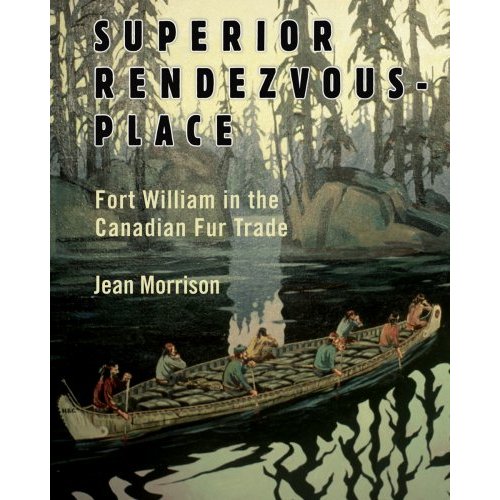Book Review: Superior Rendezvous-Place
6 Feb


Speaking of the North West Company …
We thought it worth noting that a new edition of Jean Morrison’s Superior Rendezvous-Place: Fort William in the Canadian Fur Trade was recently published. Morrison’s history of fur trade activities in the Thunder Bay, Ontario region is a fine read for history buffs, fur trade enthusiasts, and paddlers interested in the historic routes into the Pays d’en Haut – the up-country west of Lake Superior.
The new edition makes for a nice companion to Carolyn Gilman’s The Grand Portage Story, which recounts the story of the more famous – among US citizens anyway – of the two principle routes out-bound from the western end of Gitchi Gummi.
Morrison’s volume, which like Gilman’s is richly illustrated with color and black-and-white images, tells both the local story of trade and travel via the Kaministiquia route as well as the broader context of the North American fur trade. Morrison, a historian by profession, tells a strong story in this book aimed at the general reader.
The Kaministiquia route from the water body (and now the city) known as Thunder Bay was used off and on throughout the early decades of the fur trade, but saw its heaviest use between 1803 and 1821 when British North West Company traders based in Montreal needed a route into the northwest that skirted US territory. American officials had begun charging traders a tariff for the use of Grand Portage.
The Kaministiquia passage kept voyageurs on the trail an extra week en route to Lac la Croix, the first interior lake common to both routes. It traced a route north along the Kaministiquia River to Dog Lake, then traveled west to La des Mille Lacs, before angling southwest to join what we know now as the border route at Lac la Croix.
Morrison is at her detailed-packed best describing the life in, around, and flowing to and from the Fort William — describing the daily lives of natives, voyageurs, clerks, and partners. She recounts the effect of the War of 1812 on the upper Great Lakes, describes the trading battles between the Nor’westers and the Hudson’s Bay Company, and follows the story of Fort William through the absorption of the North West Company by the HBC in 1821 and until the establishment of an historic park in the area in more recent times.
For the paddler interested in the old stories about the fellow travelers in the heart of historic and modern “Canoe Country,” Morrison’s book is an essential read.










